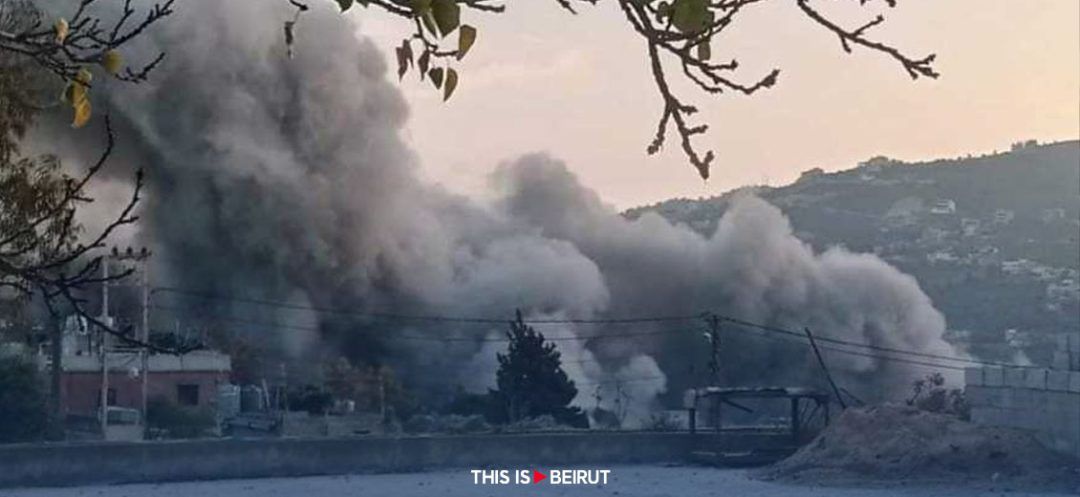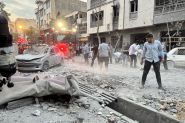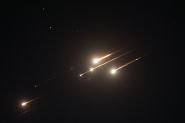- Home
- War in the Middle East
- South Lebanon: Raids and Environmental Hazard Rendering Life More Difficult

Continuous Israeli bombardment on Friday is rendering the life of South Lebanon residents increasingly difficult and forcing the displacement of more people as the scope of the attacks widens.
According to the latest counts of the United Nations Office for the Coordination of Humanitarian Affairs (OCHA), more than 80,000 people have been forced to flee their homes in South Lebanon.
In this context, the situation of the inhabitants of the villages adjacent to the Blue Line is becoming increasingly difficult. A number of farmers tried to return to their fields, but the Israeli army opened fire on them to prevent them from continuing their work.
On the latest field developments, two Israeli shells fell early on Friday morning on Kfar Kila. Moreover, Israeli warplanes bombed Mount Balaat near Ramya, launching 4 air-to-ground missiles, causing a powerful explosion whose echo resonated strongly in the areas of Bint Jbeil and Tyre.
Israeli warplanes also targeted a location in Aita al-Shaab with a number of rockets, and two Israeli artillery shells targeted Abu Ghabra Valley, at the southern outskirts of Kfar Sir in the Nabatiyeh district.
Moreover, 12 Israeli airstrikes hit Mount Balaat, the wooded area near the town of Ramya, and Khallet Warda on the outskirts of Aita al-Shaab.
Fighter jets dropped a large number of air-to-ground missiles, causing extensive environmental damage and destroying forested areas in the targeted region.
Israeli reconnaissance aircraft continued flying over the western and central sectors and the outskirts of the city of Tyre overnight. The Israeli army also dropped flare bombs over villages and towns adjacent to the Blue Line.
On Thursday evening, the Israeli army fired a number of heavy artillery shells at the outskirts of Naqoura, Dhayra and Alma al-Shaab, while UNIFIL forces held their positions and sounded the alarm sirens multiple times during the shelling.
According to the latest counts of the United Nations Office for the Coordination of Humanitarian Affairs (OCHA), more than 80,000 people have been forced to flee their homes in South Lebanon.
In this context, the situation of the inhabitants of the villages adjacent to the Blue Line is becoming increasingly difficult. A number of farmers tried to return to their fields, but the Israeli army opened fire on them to prevent them from continuing their work.
On the latest field developments, two Israeli shells fell early on Friday morning on Kfar Kila. Moreover, Israeli warplanes bombed Mount Balaat near Ramya, launching 4 air-to-ground missiles, causing a powerful explosion whose echo resonated strongly in the areas of Bint Jbeil and Tyre.
Israeli warplanes also targeted a location in Aita al-Shaab with a number of rockets, and two Israeli artillery shells targeted Abu Ghabra Valley, at the southern outskirts of Kfar Sir in the Nabatiyeh district.
Moreover, 12 Israeli airstrikes hit Mount Balaat, the wooded area near the town of Ramya, and Khallet Warda on the outskirts of Aita al-Shaab.
Fighter jets dropped a large number of air-to-ground missiles, causing extensive environmental damage and destroying forested areas in the targeted region.
Israeli reconnaissance aircraft continued flying over the western and central sectors and the outskirts of the city of Tyre overnight. The Israeli army also dropped flare bombs over villages and towns adjacent to the Blue Line.
On Thursday evening, the Israeli army fired a number of heavy artillery shells at the outskirts of Naqoura, Dhayra and Alma al-Shaab, while UNIFIL forces held their positions and sounded the alarm sirens multiple times during the shelling.
Read more



Comments